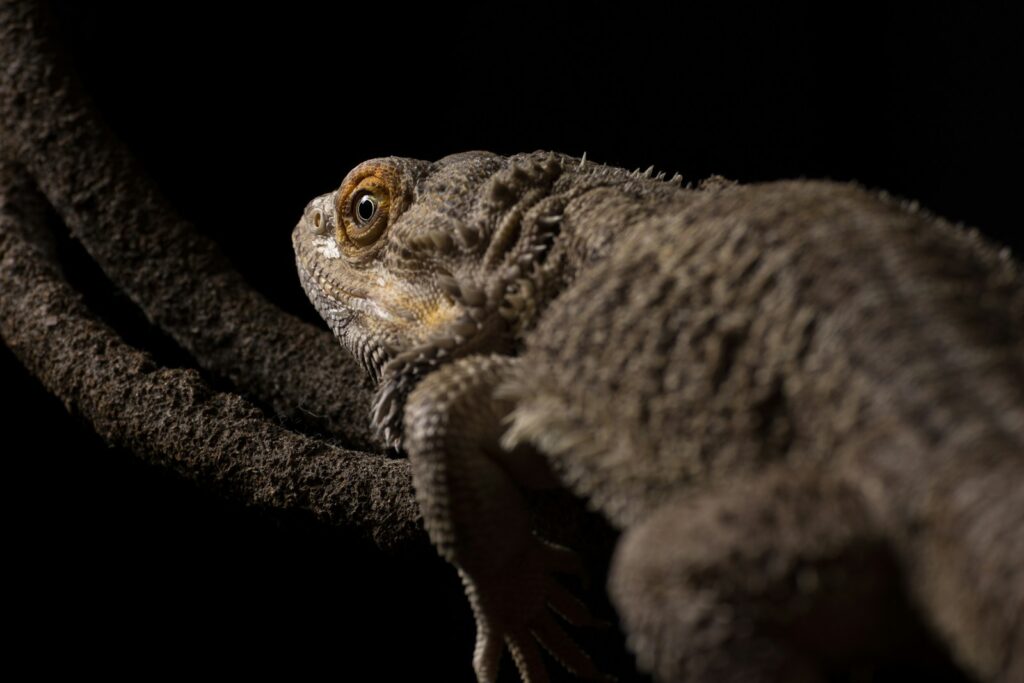In the shadows of the exotic pet trade, a growing network of specialized rescue centers has emerged as a critical lifeline for animals facing neglect, abandonment, and abuse. These sanctuaries represent the intersection of animal welfare, conservation ethics, and human responsibility. While the allure of owning exotic animals—from pythons and parrots to monkeys and big cats—continues to captivate many, the reality of their specialized needs often leads to situations of severe neglect. Rescue centers have evolved to address this crisis, transforming the lives of these displaced animals while educating the public about the complexities of exotic pet ownership. Their work spans rehabilitation, sanctuary, advocacy, and public education, forming a crucial safety net in a system where exotic animals frequently become casualties of human impulse and insufficient regulation.
The Growing Exotic Pet Crisis

The exotic pet trade has exploded into a multi-billion dollar industry, with millions of animals being captured from the wild or bred in captivity annually to satisfy human desire for unusual companions. Unfortunately, the initial excitement of owning a tiger cub, kinkajou, or sulcata tortoise frequently gives way to the harsh reality of their specialized care requirements, lengthy lifespans, and potentially dangerous behaviors as they mature. Many owners find themselves unprepared for the 40-year commitment of a parrot, the specialized dietary needs of a sugar glider, or the enclosure requirements for a full-grown python. This disconnect between expectation and reality has created a silent crisis, with rescue facilities reporting overwhelming numbers of surrendered, abandoned, and confiscated exotic animals requiring immediate intervention and long-term care.
Understanding the Unique Challenges of Exotic Pet Ownership

Unlike domestic animals that have evolved alongside humans for thousands of years, exotic species retain their wild instincts and specialized biological needs regardless of being born in captivity. A savannah monitor lizard requires precise temperature gradients, humidity levels, and ultraviolet light exposure that most homes simply cannot provide adequately. Primates like capuchin monkeys need complex social structures and environmental enrichment that few private owners can replicate, leading to severe behavioral issues including self-harm and aggression. Even smaller exotics like sugar gliders or hedgehogs require specialized diets, nocturnal accommodations, and veterinary care that general practitioners are often unequipped to provide. These challenges create a perfect storm where well-intentioned but unprepared owners find themselves with animals suffering from malnutrition, metabolic bone disease, stereotypic behaviors, and other serious health conditions resulting from inappropriate care.
The Birth and Evolution of Exotic Animal Rescue Centers

The first dedicated exotic animal rescue facilities emerged in the 1970s and 1980s as passionate individuals responded to the growing number of displaced animals from the burgeoning exotic pet trade. What often began as backyard operations run by committed individuals has evolved into professional organizations with specialized staff, veterinary partnerships, and accreditation standards. Today’s exotic animal rescue landscape includes a diverse network of facilities, from single-species specialists like primate sanctuaries to multi-species havens capable of housing everything from parrots to tigers. This evolution reflects both the increasing professionalization of the animal rescue field and the unfortunate reality that the exotic pet crisis has only grown more severe over time. Modern rescue centers now incorporate rehabilitation sciences, conservation education, and advocacy work that extends far beyond the simple housing of unwanted animals.
Rehabilitation: Addressing Physical and Psychological Damage

When exotic animals arrive at rescue centers, they often bear profound physical and psychological scars from their time in inappropriate captive conditions. Reptiles may suffer from metabolic bone disease due to improper lighting and nutrition, while big cats frequently arrive with permanent skeletal deformities from vitamin deficiencies or inappropriate housing during crucial growth periods. Birds often display severe psychological trauma manifested through feather plucking, self-mutilation, and stereotypic behaviors that can take years of specialized care to address. Rehabilitation programs at these centers combine veterinary intervention, specialized nutrition, environmental enrichment, and behavioral therapy to help these animals recover to the fullest extent possible. The process requires tremendous patience and expertise, as wild animals mask symptoms of illness until they’re critically ill—a survival mechanism that complicates rehabilitation efforts.
Sanctuary: Providing Lifetime Care

Unlike domestic animal shelters that aim for adoption, the vast majority of exotic animal rescues function as permanent sanctuaries, providing lifetime care for animals that cannot be returned to the wild or placed in other appropriate settings. This long-term commitment presents significant challenges in terms of resources, as many exotic species have lifespans measured in decades—macaws may live 70+ years, tortoises over a century. Legitimate sanctuaries prioritize the natural needs of each species by providing spacious, enriched habitats that allow for species-appropriate behaviors, social groupings when applicable, and protection from exploitation. The financial burden of providing this care is substantial; a tiger in captivity may cost upwards of $10,000 annually for basic care, with medical interventions potentially adding tens of thousands more. This reality shapes the operational model of rescue centers, necessitating robust fundraising operations, volunteer programs, and in some cases, carefully managed educational visitation programs that balance animal welfare with the need for public support.
The Financial Realities of Exotic Animal Rescue

The operation of an exotic animal rescue facility represents a massive financial undertaking, with costs that far exceed those of domestic animal shelters. A medium-sized facility housing 50-100 animals of various species may require a yearly operating budget exceeding one million dollars, covering specialized diets, habitat maintenance, veterinary care, and trained staff. The economics become even more challenging when considering that many animals arrive with chronic health conditions requiring lifelong treatment—a primate with diabetes, a big cat with arthritis, or a parrot with chronic respiratory disease. Most sanctuaries operate as non-profit organizations, relying on a combination of private donations, grants, corporate sponsorships, and limited education programs to fund their operations. This financial precarity represents one of the greatest challenges in the field, with many smaller rescues struggling to maintain adequate care standards during economic downturns or donation slumps.
Legal Frameworks and Regulatory Challenges

Exotic animal rescue centers operate within a complex patchwork of federal, state, and local regulations that vary dramatically across jurisdictions. In the United States, facilities may need to navigate USDA licensing under the Animal Welfare Act, state wildlife department permits, local zoning ordinances, and specialized requirements for certain species like those regulated under the Endangered Species Act. This regulatory landscape creates significant operational challenges, as requirements may conflict across different governmental levels or fail to address the specific welfare needs of exotic species. Many rescue organizations also participate in efforts to strengthen legal protections for exotic animals through advocacy for more comprehensive regulations on ownership, breeding, and commercial use. These legal complexities represent both a challenge for rescue operations and an opportunity to drive systemic change that might ultimately reduce the number of animals requiring rescue.
The Human Element: Staff, Volunteers, and Expertise

Behind every successful exotic animal rescue stands a team of dedicated humans with specialized knowledge and unwavering commitment to animal welfare. Professional staff at larger sanctuaries typically includes veterinarians with exotic animal experience, animal care specialists with species-specific training, and administrative personnel who manage the complex operational aspects of these organizations. Volunteers often form the backbone of daily operations, providing thousands of hours of labor for tasks ranging from food preparation to habitat maintenance and public education. The knowledge requirements are steep—caring for exotic animals demands understanding of specialized nutrition, behavioral needs, environmental parameters, and medical conditions specific to each species. This human infrastructure represents both the greatest strength and vulnerability of rescue operations, as the specialized knowledge is often concentrated in relatively few individuals whose departure can create significant operational challenges.
Educational Outreach: Preventing Future Neglect

Many exotic animal rescues have evolved beyond their direct care mission to embrace education as a crucial preventive strategy against future neglect and abandonment. These educational programs take numerous forms, from onsite tours that demonstrate the true needs of exotic species to school outreach programs that teach responsible attitudes toward wildlife. Social media campaigns highlighting the realities of exotic pet ownership have proven particularly effective at reaching potential buyers before purchase decisions are made. Through these initiatives, rescues transform tragic individual animal stories into powerful learning opportunities that may prevent hundreds of similar cases. The most effective educational programs balance honest portrayal of the challenges of exotic animal ownership with respectful, non-judgmental approaches that engage rather than alienate audiences who might otherwise pursue exotic pet ownership.
Conservation Implications and Ethical Considerations

The work of exotic pet rescues intersects with broader wildlife conservation efforts in complex ways that raise important ethical questions. While rescues primarily address animal welfare concerns, they also indirectly combat wildlife trafficking by reducing market demand through education and providing alternatives to breeding for the pet trade. Some facilities participate in specialized conservation programs for certain species, though most rescued exotic animals are not suitable candidates for reintroduction to wild populations due to health issues, behavioral limitations, or genetic concerns. The ethical dimensions of rescue work include questions about the resources devoted to non-releasable captive individuals versus wild population protection, the potential for sanctuaries to inadvertently normalize exotic pet ownership, and the welfare implications of different management approaches. These tensions require thoughtful navigation by organizations balancing immediate animal welfare needs with broader conservation goals.
Collaboration and Networks: Strengthening the Safety Net

The complexity and scale of the exotic pet crisis has necessitated the development of collaborative networks that extend the reach and effectiveness of individual rescue operations. Regional and national coalitions like the Global Federation of Animal Sanctuaries and the North American Primate Sanctuary Alliance establish care standards, coordinate rescue efforts, and facilitate the placement of animals requiring specialized care. These networks become particularly crucial during large-scale confiscations or facility closures, when dozens or even hundreds of animals may need emergency placement. Inter-facility collaboration also enables specialization, with some sanctuaries focusing exclusively on specific taxonomic groups like reptiles, birds, or primates, allowing for more tailored care protocols and expertise development. The strongest networks include partnerships with law enforcement agencies, wildlife departments, and even international organizations that collectively strengthen the safety net for exploited exotic animals.
Success Stories: Transformation and Renewal

Behind the statistics and challenges lie countless stories of individual animals whose lives have been transformed through rescue and rehabilitation. Consider the case of Kiki, a capuchin monkey kept for 15 years as a “surrogate child” in a basement apartment, who arrived at a primate sanctuary with severe psychological trauma and dental disease from an improper diet. After three years of specialized care, dental surgery, and gradual introduction to conspecifics, she now lives in a social group, displaying natural behaviors that had been suppressed for over a decade. Or Zeus, a Bengal tiger surrendered after outgrowing his suburban backyard enclosure, who arrived with severe metabolic bone disease and muscle atrophy but now patrols a multi-acre habitat with appropriate nutrition and veterinary support. These success stories serve as powerful testimony to the resilience of these animals and the impact of appropriate specialized care, even after years of neglect or mistreatment.
The Future of Exotic Animal Rescue

The field of exotic animal rescue continues to evolve in response to changing patterns in the exotic pet trade, advances in animal care science, and shifting public attitudes toward wildlife in captivity. Emerging technologies like telemedicine are expanding access to specialized veterinary care for facilities in remote locations, while social media has revolutionized fundraising capabilities and public awareness efforts. Forward-thinking sanctuaries are incorporating sustainability practices like solar power, water reclamation systems, and innovative habitat designs that reduce operational costs while improving animal welfare. Perhaps most critically, there’s growing recognition of the need for proactive policy solutions that address the root causes of the exotic pet crisis, rather than merely responding to its consequences. The most effective future models will likely combine direct animal care with robust advocacy, education, and policy engagement that collectively reduce the number of animals requiring rescue in the first place.
Conclusion

The specialized rescue centers dedicated to exotic animals represent far more than mere holding facilities for unwanted pets—they embody a critical response to the complex ethical, welfare, and conservation challenges created by the exotic pet trade. Through their multifaceted work in rehabilitation, sanctuary care, education, and advocacy, these organizations address both the immediate needs of neglected animals and the systemic issues that continue to drive the cycle of acquisition and abandonment. As public understanding of animal welfare advances and regulatory frameworks evolve, these rescue centers stand as essential institutions that bridge compassionate care with forward-looking solutions. Their work reminds us that addressing the exotic pet crisis requires more than individual rescue operations—it demands a comprehensive reconsideration of our relationship with wildlife and the ethical boundaries of animal ownership.
















Leave a Reply